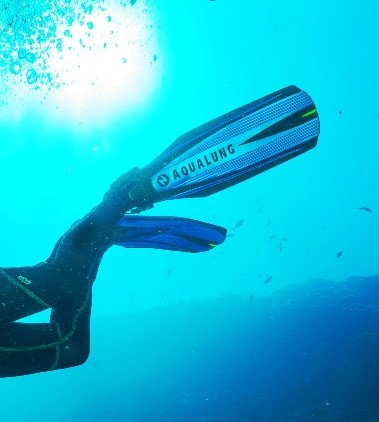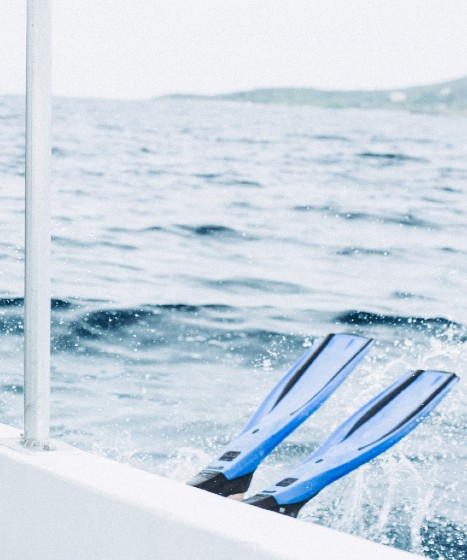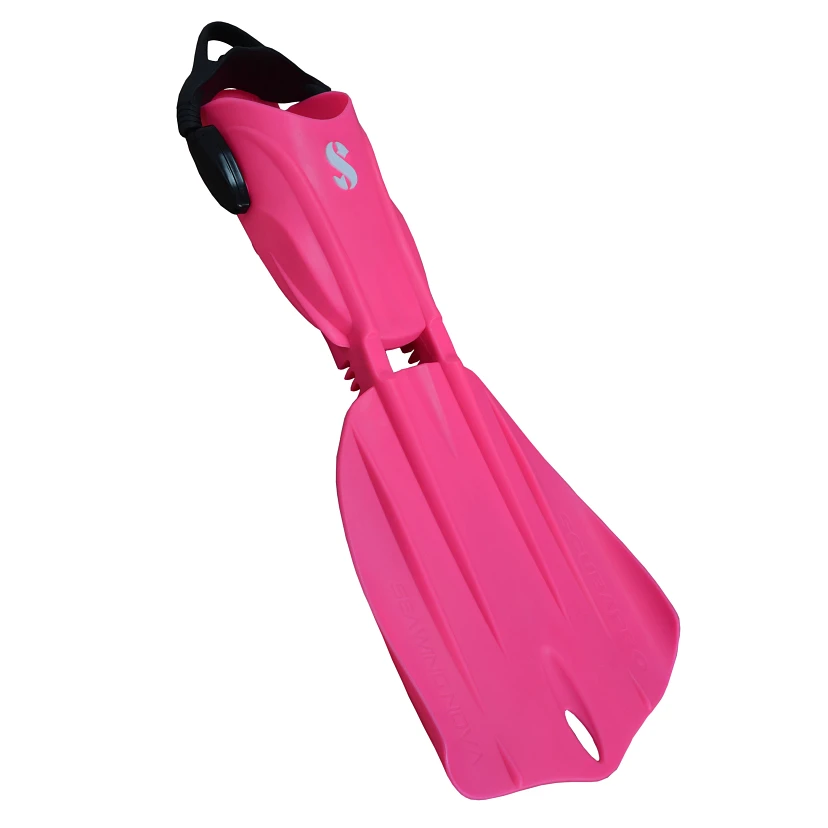Scuba Fins: A Complete Guide
- Home
- Scuba Diving Equipment
- Scuba Fins
Table of Contents

Scuba fins help every diver glide through the water with ease. But how do you know which fins are the right choice for you?
Factors to Consider When Shopping For Scuba Fins
Here are a few things to consider when searching for a new pair of scuba fins.
Open Heel vs Full Foot Scuba Diving Fins: What’s The Difference?
Scuba diving fins come in full-foot or open-heel styles.
Full-foot fins are simple to use. Divers can simply slide their foot into the comfortable foot pocket. Full-foot fins are also lightweight, making them easy to pack.
However, there are some cons associated with full-foot fins. Full-foot fins must fit properly or a diver will form blisters and cuts on the top of the foot. Without a boot, there is no thermal protection, making cold-water diving uncomfortable.
Open-heel fins feature straps that go over the heel. These straps can be adjusted to provide additional comfort. Using a strap also makes it easy for divers to put their fins on in the water. Booties or dive socks need to be worn with open-heel fins but this provides the added benefit of thermal protection and protection from rocky shore dive entries.
Open-heel fins can be slightly heavier and may cause increased drag at the surface.
Split Fins vs Blade Fins
Split fins have a split down the middle of the blade, like the tail of a fish. The two split blades act like a vortex or propeller, twisting independently with each stroke. This can provide optimal thrusts and increased speed.
Drag is reduced with split fins, helping to make them more energy efficient. Additionally, the flexibility of the fin reduces strain on joints, reducing fatigue and cramping. Many divers with ankle or knee problems find split fins more comfortable.
Split fins are best for divers who flutter kick, as they don’t have the stiffness to frog kick. The lack of stiffness can also impact a diver’s ability to turn or back up.
Blade fins, or paddle fins, allow a diver to use any type of kick, such as flutter, frog, or dolphin. The blades offer better propulsion and the fins’ stiff construction makes them a better choice for diving in a current.
Blade fins make it easy to maneuver, making them a better choice for cave and wreck diving. Additionally, these fins are the optimal choice for rescue diving.
Pivot blades are one of the newer designs on the market, with a hinge across the blade. It is supposed to increase energy transfer and propel divers with less effort.
Blade fins are heavier than split fins and can be more difficult to pack for travel.

Buoyancy
Every piece of equipment can impact your buoyancy. Like all equipment, some fins are positively buoyant, some neutral, and the rest negatively buoyant. Depending on your needs, researching the buoyancy of the fins you are considering may be a good idea.
Fit
Every scuba fin manufacturing company provides a size chart that should be consulted, especially when purchasing online.
Typically, open-heel fins come in sizes XXS-XXL, with combinations in between such as SM and ML.
Full-foot fins generally follow the same size chart as shoes.
When trying on the fins, you should wear whatever extra gear you would typically wear. For open-heeled fins, this generally means a boot or dive socks. The fit should feel secure without being too tight.
How Much Do Scuba Fins Cost?
A new pair of fins commonly cost between $75 – $300.
Most divers will invest in several pairs of fins over time as they learn more about the type of kick they prefer to do, the type of diving they enjoy, and of course, aesthetics. Who doesn’t love mixing and matching the colors of their dive gear?
How Long Do Scuba Fins Last?
The lifespan of scuba fins can vary depending on a variety of factors such as the frequency of use, the conditions they are used in, and how well they are cared for.
When properly cared for, fins used by the average diver should last at least a decade, frequently longer. The most common reason for replacement is actually upgrading to a new style or the loss of one fin. Of course, instructors and dive guides who are in the water every day will have additional wear and tear on their fins.
It’s important to note that signs of wear and tear such as cracks, delamination, or loss of flexibility will occur over time, which can affect the performance and safety of the fins.
It’s important to inspect your scuba fins regularly and replace them if any signs of damage are present. Additionally, following the manufacturer’s instructions for maintenance and storage can help extend the life of your scuba fins.
How To Care For Your Scuba Fins
Caring for your fins is pretty easy. Here’s how:
- Always rinse your fins off with fresh water after a dive. Be sure to flush out the buckles to prevent a salt, sand, or mud build-up.
- Let them dry completely before storing.
- Store the fins in a place where they aren’t hit by direct sunlight.
- Store the fins flat. A wrinkle or crease could impact performance.
By following these simple steps you’ll get the maximum use out of your investment.
Read The Latest Posts About Scuba Diving Fins!
Scubapro Seawing Nova Fins: A Complete Guide
Discover what makes the Scubapro Seawing Nova different from other scuba diving fins.
Mares Avanti Quattro + Diving Fins: Everything You Need To Know
Learn about the Mares Avanti Quattro + diving fins, one of the best selling fins in the world.


